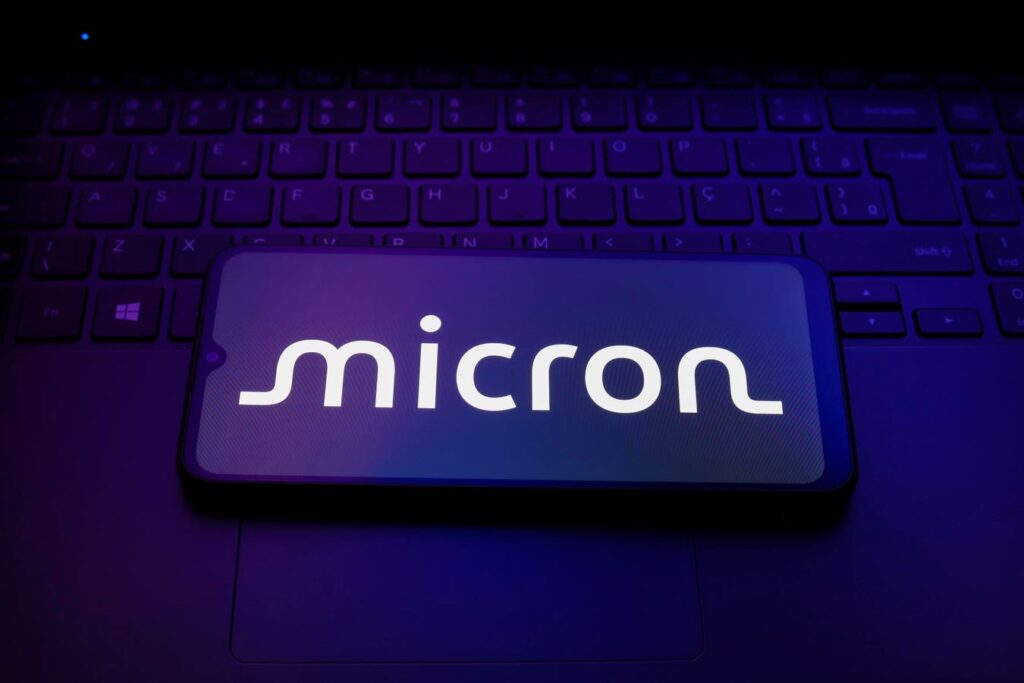Memory and storage solutions leader Micron Technology (NASDAQ:MU) is scheduled to announce its earnings at the end of June. It is anticipated that revenues will increase by approximately 30% year-over-year to $8.83 billion, while earnings are expected to reach $1.59 per share, compared to $0.62 in the same period last year. Micron has been experiencing significant growth in its data center division due to the ongoing AI boom. There has been a sharp rise in the demand for high-bandwidth memory, which is utilized alongside GPUs for AI applications, leading to a nearly 50% sequential increase in HBM memory revenue over the last quarter as production scales up. Furthermore, Micron seems to be in a stronger position than its competitors, as the company reports gaining market share in these high-margin sectors. Notably, Micron is the sole company currently mass-producing low-power DRAM for data centers, which has become increasingly vital in the AI era as businesses strive to reduce energy expenses.
The company has a current market capitalization of $105 billion. Over the past twelve months, its revenue reached $31 billion, and it was operationally profitable, generating $6.2 billion in operating profits and a net income of $4.7 billion. For those looking for potential upside with less volatility than individual stocks, the Trefis High Quality portfolio offers an alternative, having outperformed the S&P 500 and achieving returns greater than 91% since its launch.
View earnings reaction history of all stocks
Micron Technology’s Historical Chances of Positive Post-Earnings Returns
Here are some insights regarding one-day (1D) post-earnings returns:
- In the past five years, there have been 19 earnings data points recorded, with 8 positive and 11 negative one-day (1D) returns. Overall, positive 1D returns have occurred approximately 42% of the time.
- This percentage remains unchanged at 42% when considering data from the last 3 years instead of 5.
- The median of the 8 positive returns equals 7.9%, while the median of the 11 negative returns equals -4.4%
Additional information regarding observed 5-Day (5D) and 21-Day (21D) returns following earnings is summarized along with the statistics in the table below.
Correlation Between 1D, 5D, and 21D Historical Returns
A relatively less risky approach (though not beneficial if the correlation is low) is to examine the correlation between short-term and medium-term returns post-earnings, identify a pair that exhibits the highest correlation, and execute an appropriate trade. For instance, if 1D and 5D demonstrate the highest correlation, a trader can take a long position for the next 5 days if the 1D post-earnings return is positive. The correlation data provided is based on a 5-year and a 3-year (more recent) history. Please note that the correlation 1D_5D indicates the relationship between 1D post-earnings returns and the subsequent 5D returns.
Discover more about Trefis RV strategy which has outperformed its all-cap stocks benchmark (a combination of the S&P 500, S&P mid-cap, and Russell 2000), resulting in strong returns for investors. Additionally, if you prefer potential upside with a smoother experience than investing in an individual stock like Micron Technology, consider the High Quality portfolio, which has outperformed the S&P and recorded returns exceeding 91% since its inception.
Read the full article here


